By: Michael Zangl
Golf athletes are required to execute one of the most dynamic athletic movements. In order for a golf athlete to properly produce efficient movements during their swing, appropriate explosive exercises must be prescribed and integrated into the annual training plan. The following exercises will address total body extension/rotation and coordination of the lower/upper body to target the stance stability, weight transfer, and power producing movements of the dynamic golf swing. Each exercise outlined should be implemented according to each athlete’s biomechanical and physiological differences. Progression of each exercise should be based on ability to load, points of contact, and time under tension during each muscle action.
Explosive Cable Pull Through
The explosive cable pull through exercise requires an eccentric load of the lower body posterior chain musculature and an explosive concentric action of the total body. The exercise targets the posterior longitudinal components of the body needed to stabilize the lumbar spine and pelvic musculature during the dynamic golf swing.
Set-up
Begin by attaching a triceps rope to a functional trainer cable machine or strength band to the bottom of a squat rack/stand. Assume a hip width position, knees slightly bent, facing away from the machine/rack, and grab the rope/band pulling it to a height between the hip and knee. Each repetition will begin from this position.
Lowering Phase
The lowering phase must be initiated by performing a hip hinge movement. The hip hinge movement is executed by pushing the hips straight back toward the machine/rack while keeping the shins vertical and torso locked in (braced/tight). This movement will appropriately load the posterior chain and develop stored energy used during the concentric (explosive) portion of the exercise. The eyes should be looking straight ahead about six feet in front of toes.
Upward Phase
The explosive upward phase will involve a violent extension of the hips and knees. At the top of the explosive movement, the athlete must be cued to squeeze their glutes to maximize the acyclic effect of the concentric movement. The torso will remain braced/tight and eyes focused six feet in front of the toes.
Explosive Lateral Step-Up
The explosive lateral step-up exercise combines single-leg stance mechanics and dynamic explosive hip flexion. This exercise aims to develop the lateral aspects of the hip, and will aid in the dynamic stability required to prevent lateral sway of the hips during a dynamic golf swing.
Set-up
Begin by standing to the side of a plyometric box or low step box. Place the leg closest to the box on top of the box with a slight bend in the knee. The torso should remain in a long/neutral position with the hands positioned in the same manner as running (left leg up/left hand back). The down leg should be placed right behind the hips in a position ready to flex and explode.
Upward Phase
The upward phase will be initiated by pushing off the box with inside leg/foot and rapidly flexing and exploding through with the lower/outside leg. Maintaining posture and knee position of the inside leg is crucial to the transfer of dynamic components related to the dynamic golf swing.
Lowering Phase
A controlled lowering of the flexed/exploded lower leg will be used to store the energy required to explode during the concentric action. A controlled lowering is necessary to simulate the controlled back swing.
Trap-Bar Deadlift
The trap-bar deadlift exercise will program the golf athlete to be able to push through the ground while maintaining a rigid upper body and activation of the latissimus dorsi muscles. The ability to push through the ground, extend the lower half, and activate the latissimus dorsi muscles are the main components of the posterior cross-sections of the human body, the main power producing components of the golf swing.
Set-up
Begin by stepping into the trap-bar with a hip width position. In order to get into position with the bar on the ground there is a three step process. First, bend the knees and keep a vertical torso. Second, hinge the hips as in the cable pull through. Lastly, squat to the bar and grab the handles and activate the lats/upper torso. The eyes should be focused straight ahead or six feet in front of the toes.
Upward Phase
In order to pull from the ground, the athlete must push through the ground with the entire foot and insure the hips/torso raise at the same rate. Raising the hips/torso in an uncoordinated fashion will result in a loss of posterior loading and postural integrity in order to complete the exercise. The glutes should be cued to squeeze once in the upright position. Eyes should be focused straight ahead or six feet in front of the toes and torso braced/tight.
Lowering Phase
Lowering to the ground from the standing position will require the athlete to simply bring the hips straight down, keeping postural integrity and feet flat on the ground. Weights will tap the ground before initiating the upward phase. A pause can be incorporated before moving upward to elicit more starting strength.
MB OH Slam
The medicine ball overhead slam will address the uninhibited power output necessary to complete the full dynamic nature of the golf swing, and deceleration components during weight transfer.
Set-up
Begin in the standing position with the feet under the hips and a medicine ball at chest level. The arms will be slightly bent while holding the medicine ball. Eyes will be focused straight ahead and torso will be braced/tight.
Upward Phase
The athlete will bring the medicine ball overhead by extending the ankles, knees, and hips keeping the torso long/neutral. It is imperative to keep the torso long/neutral in order to properly load the lower half and lats of the upper torso.
Lowering Phase
The athlete will violently slam the medicine ball by extending the shoulders and triple flexing the ankles, knees and hips. During this phase, the athlete will pause after slamming the ball in order to elicit the deceleration effects created during portions of the dynamic golf swing. It is important to note using a soft medicine ball will allow a pause, but using a rubber medicine ball may inhibit this portion due to the rebound effect created.
MB Lateral Facing Side Toss
The medicine ball lateral facing side toss brings all the components of the golf swing into play. Stance stability, resisted weight transfer, and movement specific uninhibited power output will be on display.
Set-up
Face a wall and turn to the side in a slightly wider than hip width position. Grab a medicine ball and place it at chest level with the arms slightly bent. Torso remains long/neutral with the core braced/tight.
Lowering Phase
Begin the movement by slightly rotating the medicine ball to the back hip to load the anterior core and initiate weight transfer as seen in the golf swing. It is important to not over rotate using the lumbar spine and lose spinal integrity.
Upward Phase
To initiate the throwing maneuver of the medicine ball, the back hip should fire in order aid in the slight rotation of the torso. The coordination of the back hip and upper torso is what will elicit the greatest transfer from exercise to complete golf swing. Speed and effort of the throw is important to mimic the athletes ability strike the ball when attempting to drive the golf ball a desired distance on a consisted basis.
Programming Considerations
When implementing these dynamic explosive exercises, performing 3-4 sets of 4-5 quality repetitions is appropriate. Increasing volume may compromise form due to fatigue and compromise the role of the central nervous system when programming the athlete in a positive work environment. These exercises should also be performed at the beginning of a training session to make sure the CNS is in an adequate state to perform quality work.
About the Author
 Coach Zangl is a Lead Performance Movement Specialist at FMS Health and Safety, LLC in Irvine, California. Coach Zangl holds the following certifications: MA, CSCS, FMS, NSPA (CSAC, CWPC, CPDS, CSNC, MSPC). Coach Zangl was an assistant strength and conditioning coach at Sidelines or Headlines in North Scottsdale, Arizona, the head strength and conditioning coach at Bobby Crosby Baseball Academy working with baseball players and athletes of all ages, held a professional apprenticeship role at the University of Arizona, assisting in the overall development for the Wildcats Football, Baseball, M/W Tennis, Women’s Golf, Women’s Basketball and Track and Field teams. He was also an offensive line coach and strength and conditioning coordinator at Tesoro High School for 5 seasons and head football strength and conditioning coach at Athletes Choice in Rancho Santa Margarita.
Coach Zangl is a Lead Performance Movement Specialist at FMS Health and Safety, LLC in Irvine, California. Coach Zangl holds the following certifications: MA, CSCS, FMS, NSPA (CSAC, CWPC, CPDS, CSNC, MSPC). Coach Zangl was an assistant strength and conditioning coach at Sidelines or Headlines in North Scottsdale, Arizona, the head strength and conditioning coach at Bobby Crosby Baseball Academy working with baseball players and athletes of all ages, held a professional apprenticeship role at the University of Arizona, assisting in the overall development for the Wildcats Football, Baseball, M/W Tennis, Women’s Golf, Women’s Basketball and Track and Field teams. He was also an offensive line coach and strength and conditioning coordinator at Tesoro High School for 5 seasons and head football strength and conditioning coach at Athletes Choice in Rancho Santa Margarita.
Coach Zangl played football and baseball at Tesoro High School and went on to play football at Saddleback College. He was also a National Football Foundation and College Hall of Fame Scholar Athlete in 2010 and United States Marine Corp Male Distinguished Athlete Award Recipient. Coach Zangl graduated from Saddleback College as a scholar athlete with an Associate Degree in Liberal Studies, a Bachelor’s degree in Kinesiology with a focus in Sports Studies from California State University, Fullerton and a Master’s degree from Concordia University, Irvine in Coaching and Athletic Administration.

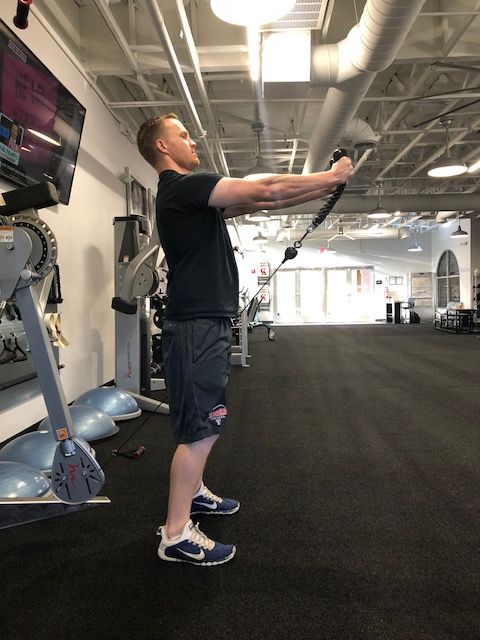
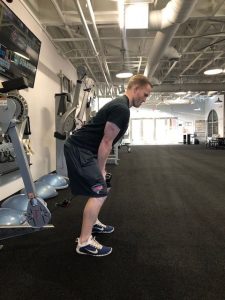
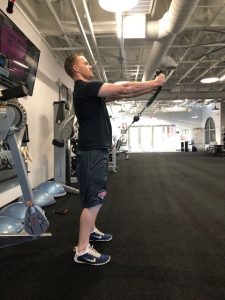
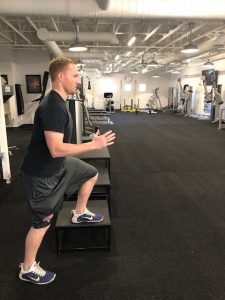
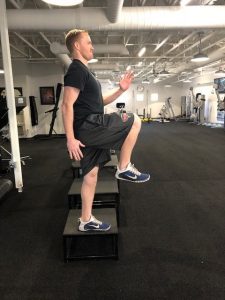

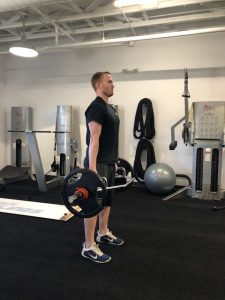

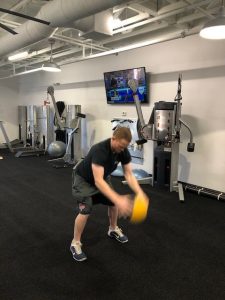

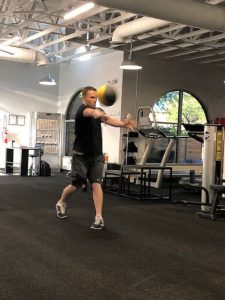
0 Comments for “5 Exercises to Help Develop a More Powerful Golfer”